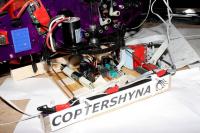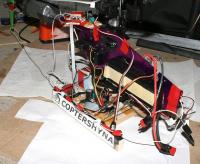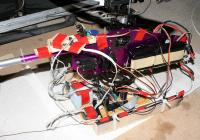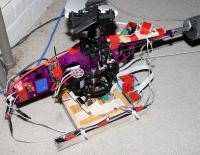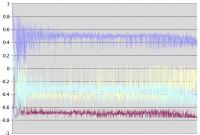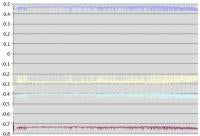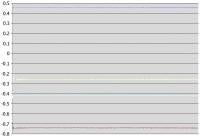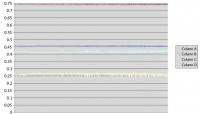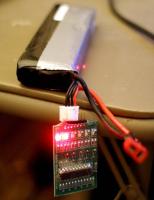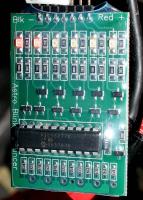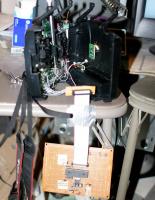Archive for March, 2007
Comments (0)
Add Comment
-
 Views: 375
Views: 375
Haven't had much luck running the GWS on native modulation. The breakout connector seems to induce parasitic reflections. A terminating resistor did nothing. Once airborn, the GWS is quite stable, but shutting down the motor is a bitch. -
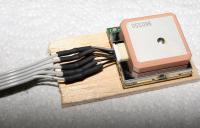 Views: 341
Views: 341
How to attach the GPS to a ribbon cable. It requires a balsa reinforcement. -
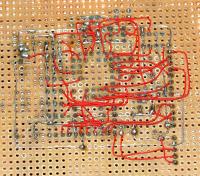 Views: 331
Views: 331
Another wrapping wire masterpiece. Almost everything we build is for outdoor use, yet the copper pads continue to oxidize. -
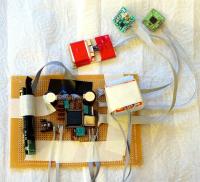 Views: 337
Views: 337
All the components are attached. A few pounds of solder later, during a stressful burn test, the 3 gyros, 3 accelerometers, 3 magnetometers, and a GPS come to life.
-
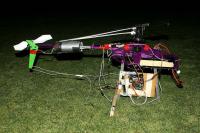 Views: 425
Views: 425
Today's mount was the most exotic. Completely replaced the skids with a pylon. Used wood for lateral support because we have no 1" aluminum. -
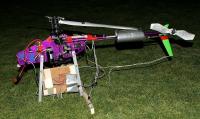 Views: 317
Views: 317
The advantage to this is easy accessibility and support for larger payloads. -
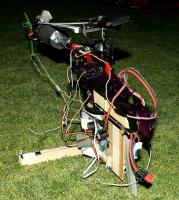 Views: 315
Views: 315
-
 Views: 303
Views: 303
-
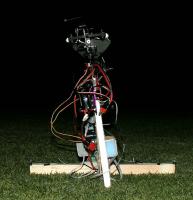 Views: 304
Views: 304
The wood was just too soft to keep it vertical. -
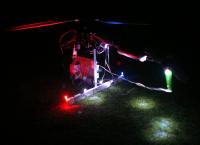 Views: 330
Views: 330
With this lighting arrangement, it was not possible to see pitch attitude. -
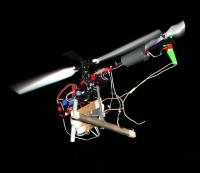 Views: 297
Views: 297
And liftoff of the T mount. Needed to gun the throttle to keep it from flipping over. A combination of top heaviness and soft wood made it try to flip over. -
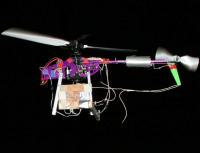 Views: 309
Views: 309
Had significant yaw oscillation again. Immediately the wood came loose.
-
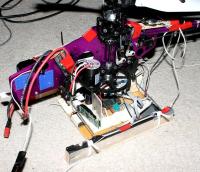 Views: 448
Views: 448
The best electronics mount so far. With the giant heat sink, there's no way for the $160 Gumstix to get crushed, but the $150 gyro block is still exposed. -
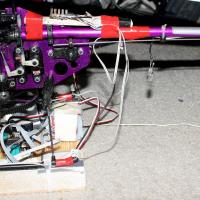 Views: 412
Views: 412
The halogen mounted on the tail boom. It must stay dry. -
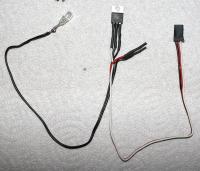 Views: 411
Views: 411
Powering a halogen from a servo connector is easy. -
 Views: 439
Views: 439
The Halogen lives for the first time. -
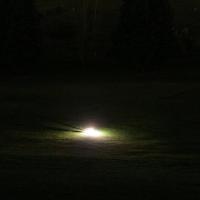 Views: 390
Views: 390
Halogen during the range test after a very very very long lightup phase. -
 Views: 431
Views: 431
Out of range and Jack Crossfire isn't even out of the frame yet. -
 Views: 506
Views: 506
Definitely wanted a fresh battery before this halogen hover. -
 Views: 604
Views: 604
Vertical 4 U.
-
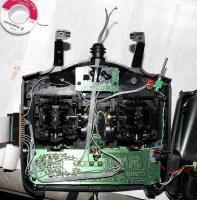 Views: 408
Views: 408
Rerouting the antenna to reduce interference. -
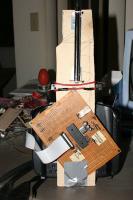 Views: 311
Views: 311
Quite unwieldey, but it reduced interference. The goal is to finish all the requirements before cutting up the PC board. -
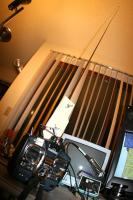 Views: 321
Views: 321
The rerouted antenna to reduce interference. Though greatly reduced, there is still interference, and if you touch the antenna, the motor will start. -
 Views: 318
Views: 318
Really wanted a range test using a 50,000 candlepower halogen to indicate the autopilot enable state. It worked in the dumpy apartment but never in the field. -
 Views: 297
Views: 297
This never lit up in the field but lit up very nicely, under digital modulation control, in the dumpy apartment. -
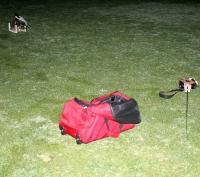 Views: 302
Views: 302
It was all hands on deck for the first test flight of custom firmware + digital modulated flight controls. No standing within 15 ft on this test. -
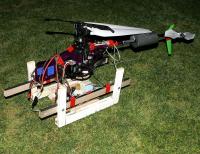 Views: 365
Views: 365
An old friend, the 6oz brick mount returned for today's electronics harness. Was the best compromise between flight performance and accessibility so far, but pitch/roll oscillation is definitely back. -
 Views: 317
Views: 317
Jack Crossfire, the test pilot, lifts it off under firmware control for the first time.
-
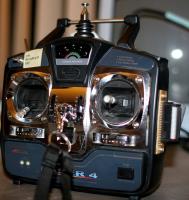 Views: 394
Views: 394
It looks like a normal, el cheapo transmitter. -
 Views: 306
Views: 306
Think again. This is the Hitektrum DX-5, for guys who don't have $350 but need 5 channels, digital transmission, and CRC checking. -
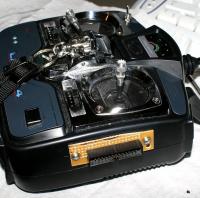 Views: 380
Views: 380
The trick with the Hitektrum was exposing all the necessary connections through a convenient data port. -
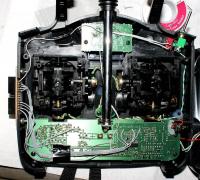 Views: 334
Views: 334
It was very easy to bypass the Hitec modulation. The signals are identical to the Airtronics and laid out very clearly. Unfortunately the autopilot switch is picking up huge interference. -
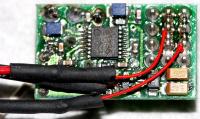 Views: 313
Views: 313
Then the GWS was a very easy bypass. -
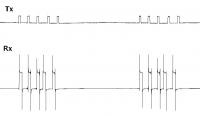 Views: 279
Views: 279
The transmitted and received signals are identical to Airtronics. -
 Views: 319
Views: 319
A lot of empty space where the Airtronics receiver was. -
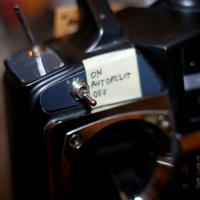 Views: 333
Views: 333
The new home of the most over engineered switch in the universe.
-
 Views: 387
Views: 387
The Airtronics has a Gold Sticker of Destiny, meaning it works under modern regulations. Good thing so many people read this blog and pointed that out. -
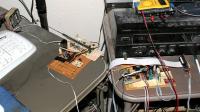 Views: 336
Views: 336
Transmitter and copter receiver in the programming position. -
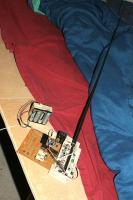 Views: 329
Views: 329
Transmitter on the bed, broadcasting autopilot disable to the great beyond. -
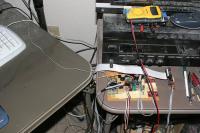 Views: 320
Views: 320
The receiever in the position that got 3kbit/sec. -
 Views: 298
Views: 298
The actual tokenized data received by the Airtronics. Each gap encodes 4 bits.
